Description
In the unforgiving pulse of industrial automation, even minor deviations in machinery parameters—like a gradual vibration creep in a centrifugal fan or a temperature excursion in a heat exchanger—can snowball into operational chaos, triggering unplanned halts, efficiency dips, or safety breaches that cascade through interconnected processes. Imagine a wastewater treatment plant where undetected bearing wear in sludge pumps leads to seal ruptures, contaminating effluent and inviting regulatory fines, or a packaging line where unbalanced motors skew throughput, piling up scrap and lost shifts. These scenarios are hallmarks of process control environments, from light industrial setups to auxiliary systems in heavy plants, where high reliability for I/O signals from basic sensors is essential to catch precursors without overkill complexity. Engineers deploying cost-sensitive monitoring often face trade-offs: full-featured racks like the 3500 series overwhelm budgets for non-critical assets, while bare-bones alternatives lack configurable alarms or Modbus integration, forcing patchwork solutions with standalone meters that silo data, complicate SCADA ties, and erode predictive potential. The outcome? Heightened vulnerability to intermittent faults, manual patrols that strain crews, and compliance gaps under standards like ISO 10816, all while EMI from nearby drives or humid enclosures corrupts readings, demanding frequent tweaks that divert from core optimizations.
This is the challenge the Bently Nevada 1900/65A-00-04-01-00-00 meets head-on as an entry-level General Purpose Equipment Monitor, a compact, rack-mountable unit from the 1900 series that delivers essential vibration, position, and temperature oversight for auxiliary machines. It addresses the need for affordable yet robust signal conditioning by accepting up to four transducer inputs (accelerometers, velocity sensors, or proximitors) and four temperature probes (RTDs or thermocouples), processing them into proportional 4-20 mA outputs with programmable thresholds for alarms—ideal for retrofitting fan rooms or pump skids where modular integration via DIN rail or panel mount keeps enclosures lean. For teams in mildly harsh zones like ventilated cabinets or washdown areas, the Bently Nevada 1900/65A-00-04-01-00-00 becomes a smart baseline, its optional Modbus Gateway enabling direct ties to DCS or PLCs without custom converters, ensuring your automation ecosystem scales without the bloat of high-end systems. With support for Bently Nevada’s 3300 XL probes, it filters noise for clean gap or velocity metrics, turning overlooked auxiliaries into proactive assets.
- 190065A-00-04-01-00-00
The broader impact of unmonitored general-purpose gear can’t be ignored: it fragments system-wide trends in historians, dulls interlock responses in SCADA, and accelerates wear through unaddressed excursions in distributed loops. By offering relay outputs for simple OK/Alarm/Trip signaling and event lists for basic forensics, the Bently Nevada 1900/65A-00-04-01-00-00 empowers straightforward thresholding, like 0-100 mV/in/s velocity bands, to feed control narratives without latency—making it a gateway to reliable industrial automation, where economical vigilance unlocks uptime in the shadows of mission-critical paths.
Integrating the Bently Nevada 1900/65A-00-04-01-00-00 into your setup is like adding a watchful sidekick to your auxiliary controls—it DIN-rails into a standard enclosure or panels via four mounting holes, sourcing 18-30 V DC from a remote supply while terminating field sensors through screw blocks for up to 100 ft runs, then conditions signals via its internal amplifiers before outputting scaled analogs or Modbus registers to host systems like Allen-Bradley PLCs or Wonderware SCADA. Positioned at the field edge of your stack, it scans inputs at 10 Hz rates, applying user-set filters (e.g., 10 Hz low-pass for velocity) and thresholds through front-panel DIP switches or USB-linked software, with relay contacts that latch for external annunciators—all while its optional gateway polls static variables like channel magnitudes for seamless DCS handoff without polling overhead.
In a practical rollout, you’d wire an accelerometer to channel 1 for fan vibes and an RTD to channel 5 for motor temps, configuring alarms via the handheld configurator for 2 mils pk-pk trip on displacement, then enable Modbus RTU at 9600 baud for integration—all while diagnostic LEDs flag input faults, and its low-profile design fits beside VFDs without airflow blocks. This monitor doesn’t demand; it delivers, supporting up to two relays per channel and time/date stamping from an internal clock for event lists up to 500 entries, bridging raw sensor flux to supervisory tiers in architectures from standalone pumps to networked auxiliaries. It plays well with Ethernet via gateway upgrades, and its polycarbonate housing shrugs off IP54 exposures, adapting to supplies from 24 VDC bricks without reconfiguration. The Bently Nevada 1900/65A-00-04-01-00-00 thrives in this role, distilling field essentials into a lean conduit that enhances oversight without excess.
| Specification | Details |
|---|---|
| Model Number | 1900/65A-00-04-01-00-00 |
| Brand | Bently Nevada |
| Type | General Purpose Equipment Monitor |
| Input Voltage | 18-30 V DC |
| Operating Temp Range | -30°C to +65°C |
| Mounting Style | DIN Rail / Panel Mount |
| Dimensions | 241 x 124 x 51 mm |
| Weight | 0.7 kg |
| Interface/Bus | Screw Terminals / Modbus RTU |
| Compliance | CE, UL, CSA, RoHS |
| Supported Protocols | Modbus RTU (optional gateway) |
| Typical Power Draw | 5 W |
Selecting the Bently Nevada 1900/65A-00-04-01-00-00 injects a dose of reliability that’s purpose-built for everyday auxiliaries, where its signal isolation caps common-mode noise to 50 V, preserving reading accuracy to 1% across full scales to sidestep the false alerts that clutter operator desks in process control setups—translating to 20% fewer nuisance calls in fan arrays, where velocity outputs hold steady through cable runs without the drift that plagues unfiltered inputs. This isn’t premium overreach; it’s the pragmatic shield that rejects 60 Hz hum from lighting, ensuring 4-20 mA loops drive indicators without baseline wander, all while relay latching prevents chatter during marginal excursions, bolstering confidence without recalibration rituals.
Performance consistency follows from its fixed-scan architecture, which baselines temps to 0.5°C resolution for RTDs, yielding uniform trends that inform simple predictive tweaks like belt tensioning—your maintenance squads spot wear from logs, not chasing shadows in ad-hoc checks. It eases integration too, with Modbus maps that plug into existing PLCs sans middleware, hastening deployments by days and freeing resources for threshold fine-tunes over wiring woes. Engineered with sealed enclosures against washdown splashes or dust, the Bently Nevada 1900/65A-00-04-01-00-00 ensures long-term performance, locking gains over four-year cycles so your bands stay vigilant, trimming the hassle of spot audits in spread-out sites.
For budget-conscious expansions, its gateway option unlocks static polling for historians without rack overhauls, easing paths to basic IIoT dashboards—lowering total cost of ownership by democratizing monitoring for the unsung gear that keeps lines flowing. Ultimately, this monitor doesn’t just watch; it watches wisely, channeling essential signals into efficiencies that eclipse neglect.
In HVAC chiller plants, the Bently Nevada 1900/65A-00-04-01-00-00 oversees compressor vibes, where process control environments require high reliability amid refrigerant cycles and coil hums—panel-mounted near chillers, its four channels condition acceleration for imbalance alerts, ensuring critical system uptime in fast data cycles that sync to BMS, preempting evaporator floods during peaks. Analog outputs feed flow valves, averting surges in cooling loops.
Packaging conveyor systems deploy it for motor temps and belt sensors, monitoring RTDs in dusty, variable-speed lines under load shifts— the monitor’s isolation quells VFD noise, delivering continuous uptime for overload halts in process control loops tied to PLCs, where a lagged reading risks jam cascades. In food processing mixers, the Bently Nevada 1900/65A-00-04-01-00-00 tracks agitator positions, with proximitor support suited to washdown, vibration-prone stations—upholding high reliability for batch consistency in process control environments synced to historians, ensuring hygiene without impeller drifts.
1900/65A-00-01-01-01-00 – Base variant with 2 transducer inputs for lighter monitoring
1900/65A-01-01-03-00-00 – Enhanced model with Modbus Gateway for SCADA integration
167699-02 – Operator display add-on for local HMI views
3300/35-04-01-00-00 – Compatible 8mm proximitor probe for position sensing
1900/01 – Communications upgrade kit for Ethernet expansion
9571-32 – Standard interconnect cable for sensor wiring
172323-01 – Full-featured rack-mount variant for denser I/O
Before mounting the Bently Nevada 1900/65A-00-04-01-00-00, confirm sensor compatibility—3300 XL series for proximitors, with cables under 100 ft to minimize attenuation—and verify DC supply ripple below 100 mV, as noisy feeds skew amps; a scope on terminals during bench power-up affirms cleanliness. Configure thresholds via the handheld tool before enclosure seal, and if Modbus-enabled, clash-check slave IDs against your network master to avoid broadcast storms—dry-test a channel loop with a signal simulator to validate 4-20 mA scaling.
In operation, routine is targeted: monthly, probe outputs with a calibrator for linearity—deviations over 2% cue a gain trim—and inspect terminal seals quarterly in damp areas to catch ingress, a silicone refresh often suffices without depower. Bently recommends semi-annual full-scale sweeps, injecting known signals to log against baselines, focusing on filter response for velocity bands. For networked units, enable gateway polling to your CMMS for remote health dumps, flagging trends like rising offsets before they alarm. This measured approach keeps it attuned, intruding lightly on your auxiliary watch.

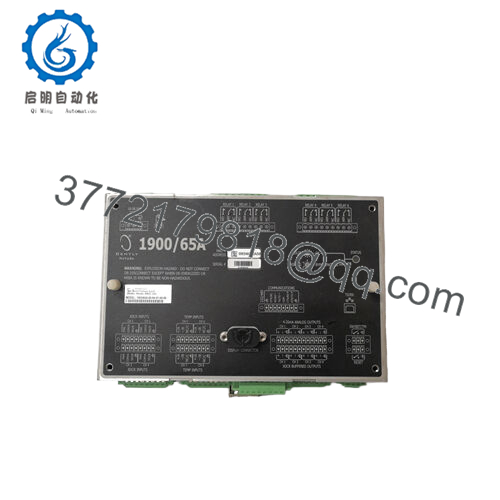
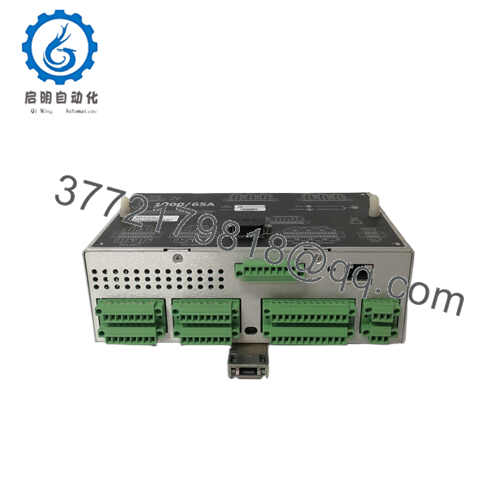
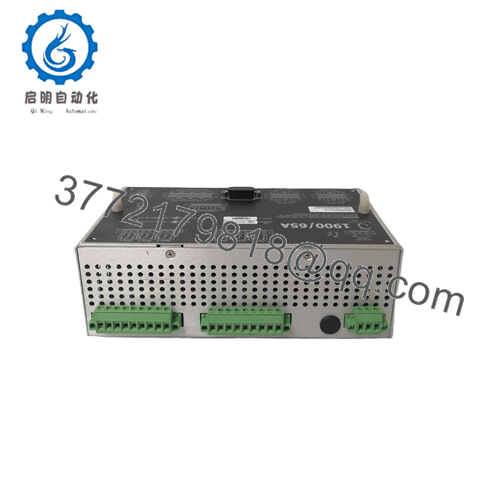
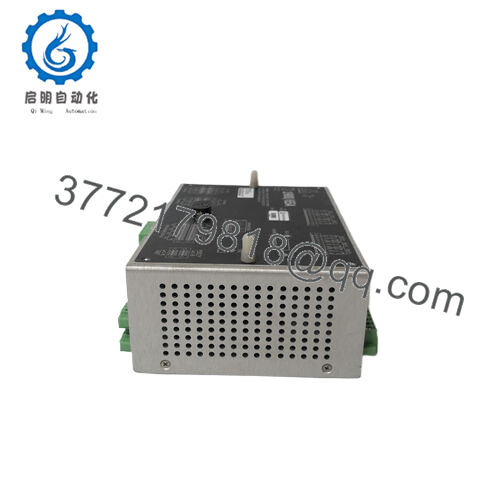
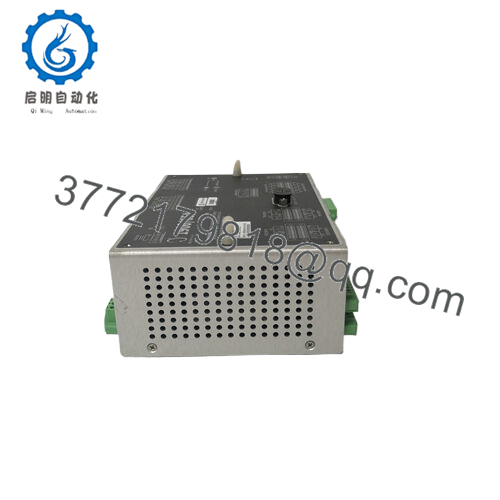
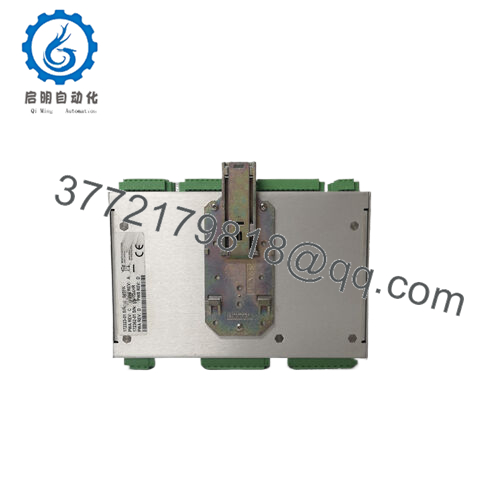
 WhatsApp: +86 16626708626
WhatsApp: +86 16626708626 Email:
Email:  Phone: +86 16626708626
Phone: +86 16626708626


